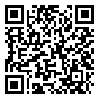BibTeX | RIS | EndNote | Medlars | ProCite | Reference Manager | RefWorks
Send citation to:
URL: http://jommid.pasteur.ac.ir/article-1-56-en.html
Introduction: Natural products have been the most successful source of potential drug leads. One of them is lichens, which have been used since antiquity as natural sources of drugs. The aim of this study was to investigate the antibacterial and antifungal activity of different extracts of the Iranian lichens in Ilam Province. Methods: The aqueous, acetone, and methanol extracts of 6 lichen species, including Caloplaca variabilis, Fulgensia subbracteata, Lecanora muralis, Physcia adscendens, Psora decipiens, and Megaspora verrucosa, were produced using Soxhlet extractor. Then, antibacterial and antifungal activities of them against 6 standard strains of bacteria, including Enterococcus faecalis ATCC 2321, Escherichia coli ATCC 1652, Proteus mirabilis ATCC 2601, Salmonella typhi ATCC 1679, Staphylococcus aureus ATCC 1885, and Staphylococcus epidermidis ATCC 2405 and two fungi, including Fusarium moniliforme and Verticillium dahliae, were evaluated using the disc-diffusion method and the minimal inhibitory concentration was determined by broth tube dilution. Streptomycin (10 µg/ml) and ketoconazole (10 µg/ml) were used as positive controls for bacteria and fungi, respectively. Sterile distilled dimethyl sulfoxide (DMSO) was used as negative control. Results: Methanol extract from F. subbracteata and L. muralis lichens showed relatively high antibacterial activities (p<0.01), whereas aqueous extracts showed no activity against the microorganisms and only acetone extract of L. muralis showed antibacterial activity against the S. epidermidis (MIC=500). Methanol extracts of F. subbracteata and L. muralis had higher antifungal activities than others. Conclusion: The methanol extracts of L. muralis and F. subbracteata showed the highest activity against the bacteria and fungi and it seems that they have some antibacterial and antifungal properties.
Received: 2015/01/28 | Accepted: 2015/04/18 | Published: 2015/06/30
| Rights and permissions | |
 |
This work is licensed under a Creative Commons Attribution-NonCommercial 4.0 International License. |

This work is licensed under a Creative Commons Attribution-NonCommercial-NoDerivatives 4.0 International License.




